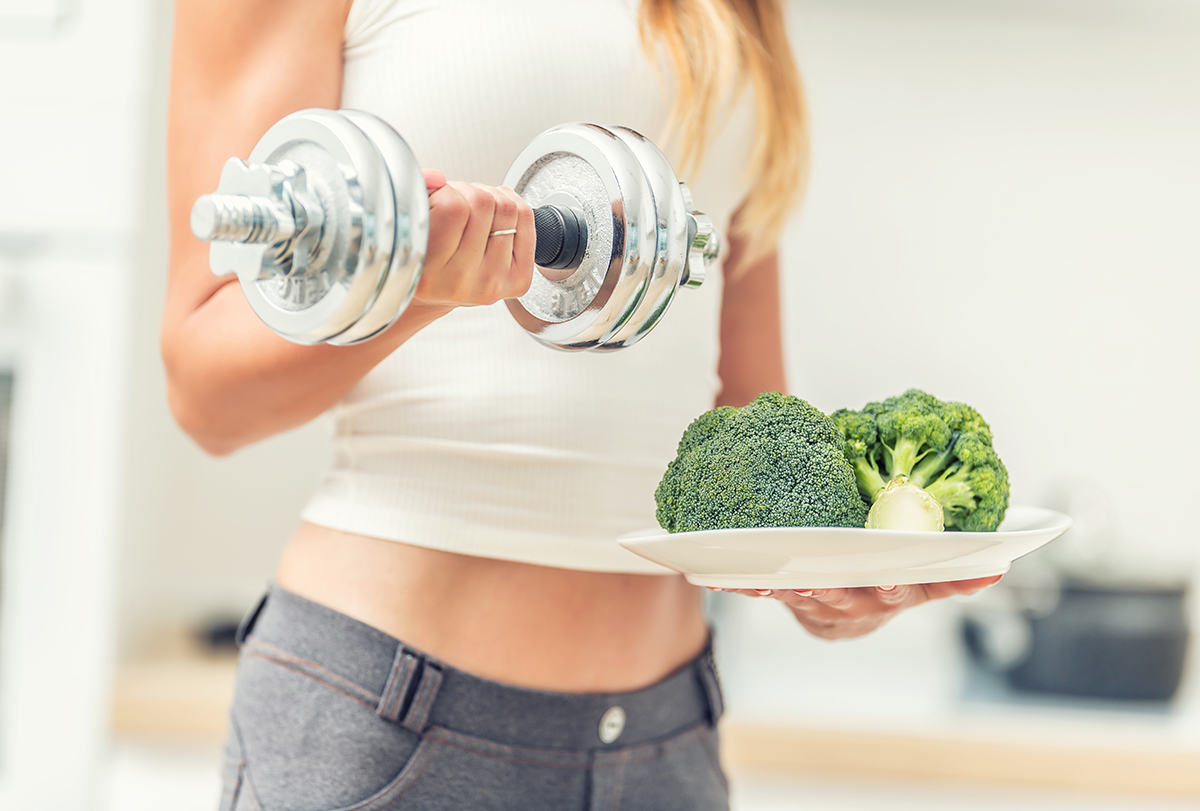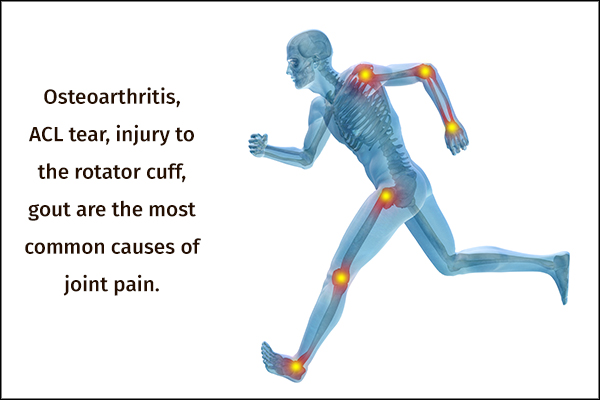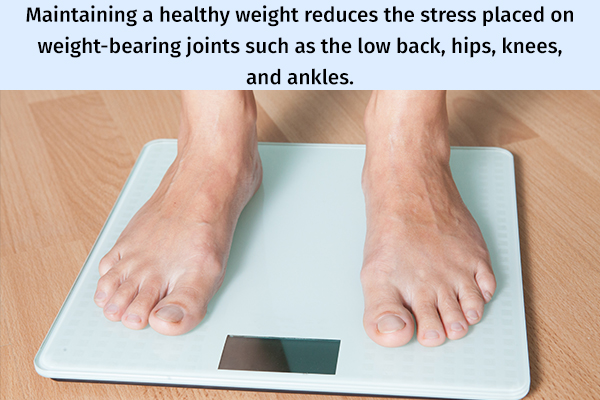In this article:
A joint, also known as an articulation, is the point at which two or more bones come together. The most common function of a joint is to facilitate movement, such as bending, turning, lifting, sitting, standing, and even lying down.

Certain joints are rigid, such as the ones between the bones in your skull. There are also movable joints, such as those in your knees, hips, and shoulders.
Healthy joints allow you to run, walk, jump, play sports, and do the other things you like to do. It is therefore important to keep your joints healthy, and to do so, you need to take care of them properly, starting early.
What Is a Joint Made up of?
Joints such as the elbows, knees, shoulders, hips, wrists, ankles, and those found in the fingers and toes are known as synovial joints. Because synovial joints are the most moveable, they are also the least stable.
Ligaments and tendons act as stabilizing structures for these joints. Ligaments connect bone to bone, and tendons connect muscle to bone. The defining characteristic of a synovial joint is the joint cavity. This joint cavity is made up of three main features:
- The articular capsule is made up of fibrous tissue that creates a closed environment for the articulating bones and keeps the bones from pulling apart.
- Synovial fluid is found inside the joint cavity and has the consistency of egg whites. The synovial fluid has three functions:
- It lubricates the articulating bones to reduce friction.
- It nourishes the cells of the joint and removes waste products.
- It helps to absorb shock forces generated by activities such as walking, running, and jumping.
- Articular cartilage covers the articulating surfaces of bones to further reduce friction and absorb shock.
Common Causes of Joint Pain

Joint pain is usually associated with the following:
- Osteoarthritis: Osteoarthritis can affect any joint, but the most common areas are the knees, shoulders, hands, and back. (1) This condition can arise from hard use over a long period, such as with athletics, and can also arise from hard use associated with obesity. Joint injury can result in osteoarthritis in later years as well. The condition of osteoarthritis generally affects the senior population and is recognized by inflammation, pain, stiffness, and decreased range of motion. (2)
- ACL tear: A common knee injury is a tear to a structure called the anterior cruciate ligament (ACL). (3) The ACL prevents hyperextension of the knee. An ACL tear occurs most commonly with activities that have a high level of sudden stops, changes in direction, and jumping associated with them, such as football.
- Injury to the rotator cuff: Pain in the shoulder is often a result of injury to the structures that make up the rotator cuff. (4) The muscles and tendons that make up the rotator cuff work to hold the upper arm bone in its socket. Pain in the shoulder can be caused by a tear in one of the muscles, inflammation of a tendon due to overuse, or impingement as a result of forcing the joint to do work beyond its capability.
- Gout: Gout develops when uric acid crystallizes and deposits in the connective tissue surrounding a joint. It generally affects the joint of the big toe but can affect any joint. The crystals can cause damage to the articular cartilage and, later, result in gouty arthritis. Gout occurs as a result of diet. (5)
Some other causes of joint pain include:
- Fibromyalgia (a neural disorder)
- Hypothyroidism (underactive thyroid)
- Ankylosing spondylitis
- Bursitis (joint inflammation)
- Joint dislocation
- Osteomyelitis (a bone infection)
- Bone fracture
- Rheumatoid arthritis
- Sprains
- Tendinitis
Simple Tips to Keep Your Joints Healthy
Here are some simple tips to maintain healthy joints:
1. Maintain a healthy body weight

Maintaining a healthy weight reduces the stress placed on weight-bearing joints such as the low back, hips, knees, and ankles. (6)
Regular exercise stimulates the bone-building and bone-strengthening processes that help maintain good bone density. Good bone density is necessary to prevent sudden bone breakage later in life, such as breaking the hip.
Regular exercise also strengthens the muscles around the joint, providing support and maintaining stability. (7) Water-based exercises are also a great way for improving the flexibility of your joints without putting too much strain on them. Exercises with heavy loads should be avoided for weak joints.
It is more advisable to begin with body weight exercises and then build to something such as using resistance bands and eventually working up to weight training. Don’t plunge straight into your exercise routine without a proper warmup. This basically involves doing light stretching exercises for 10 minutes to get your blood pumping and open up your stiff joints and muscles for greater flexibility.
2. Consume a healthy diet

A healthy diet provides the bones with the proper nourishment. A healthy bone diet includes foods high in calcium such as dairy products, broccoli, almonds, kale, figs, salmon, and soy products, such as tofu.
The diet also needs to include vitamin D to facilitate the absorption of calcium. (8) Foods rich in vitamin D include salmon and tuna, mushrooms, and eggs. Sunlight is necessary to stimulate vitamin D production within the body.
Vitamin C is a strong antioxidant that can help curb joint inflammation while also promoting tissue repair to deter the onset of arthritis. Consuming adequate amounts of this nutrient can help reduce joint degeneration, which is at the core of this disease. (9) Some of the best dietary sources of vitamin C are fruits such as oranges, cantaloupe, papayas, kiwi, strawberries, and pineapple and vegetables such as bell peppers, broccoli, and Brussels sprouts.
Plus, try to use more anti-inflammatory ingredients in your daily cooking such as garlic, tomatoes, turmeric, (10) whole grains, and olive oil (11) to keep your joints healthy and pain-free.
3. Maintain proper levels of hydration

If you do not stay well hydrated, your body will draw out water from your cartilage and related areas, which can then have adverse effects on your joints. Additionally, avoid consuming sugar-sweetened soda because it tends to increase the risk of joint problems. (12)
4. Limit your caffeine intake
Limit your caffeine intake, especially if you are aged 65 years or above. (13)
5. Wear proper footwear
An ill-fitting shoe can have negative repercussions on the joints, from the ankles and knees all the way to the hips and back. (14)
Plus, the higher your heels, the greater the strain on your feet and knee joints. Thus, people who regularly wear high heels are more at risk of developing osteoarthritis. (15) Whenever possible, it is wise to seek a professional fitting for shoes, especially for athletics and for work.
6. Avoid tobacco and alcohol consumption
Tobacco is bad for your body, including your bones, joints, and muscles. It releases toxins and oxidative stress in the body and also hampers blood flow, all of which contribute to joint and bone degeneration. (16) So if you are a smoker or consume chewing tobacco, quit as soon as possible to preserve your joint health.
Similarly, excessive alcohol consumption on a regular basis can trigger joint degeneration and increase the risk of osteoporosis. Women are advised to limit their intake to one drink a day, whereas men should keep it under two drinks a day. (17)
7. Avoid sitting or standing for prolonged periods
Avoid sitting or standing in the same position for prolonged periods as this can exert continuous stress on the joints involved, making them sore and stiff. Plus, the lack of movement inhibits blood flow in the body, which can further contribute to joint inflammation.
It’s best to switch positions from time to time or break the monotony by doing simple stretching exercises. This rule applies to both your home and workplace.
8. Correct your body posture

Correct body posture is key for minimizing the strain on the involved muscles and ligaments while standing, sitting, lying down, or performing any activity. This is because proper posture enables equal distribution of body weight on all the supporting joints and muscles.
Conversely, poor posture tends to exert greater strain on certain joints and muscles, which wear out under the load. This is why people with bad posture usually suffer from stiffness and pain in the neck, back, and limbs.
9. Don’t use worn-out sports gear
Don’t use old, damaged, or worn-out sports gear as it can make you more susceptible to accidents and injury.
10. Be mindful of your jumping technique
Athletes should be mindful of their jumping technique as the sudden jolt upon landing can greatly damage their bones, muscles, and joints over time. Always bend your knees while making the landing to minimize the whiplash.
Final Word
Do not stress a joint beyond its capacity to do work. If you experience pain in a joint, the best medicine is rest along with ice and elevation (when possible). If pain limits your capacity to carry out daily activities, it is recommended that you see a doctor.
- Was this article helpful?
- YES, THANKS!NOT REALLY


